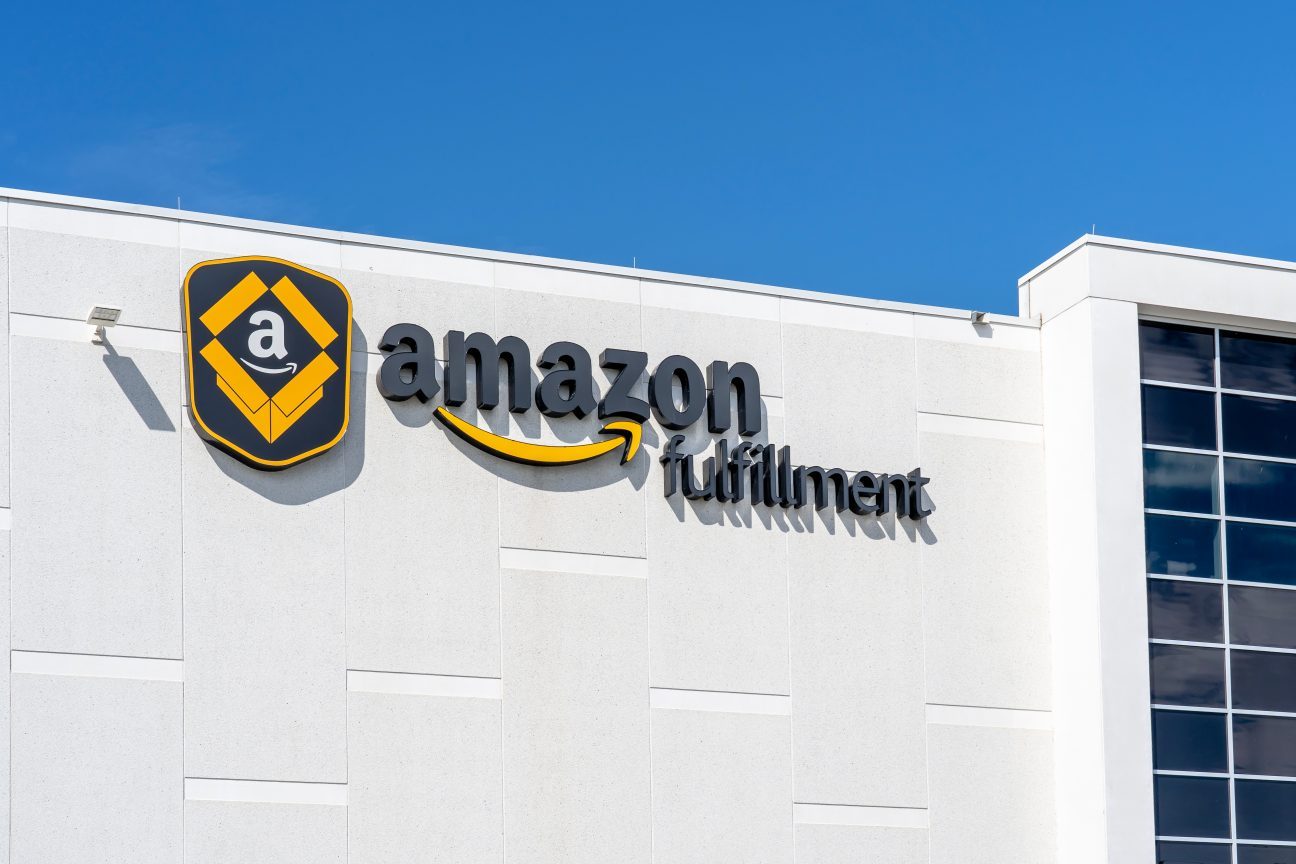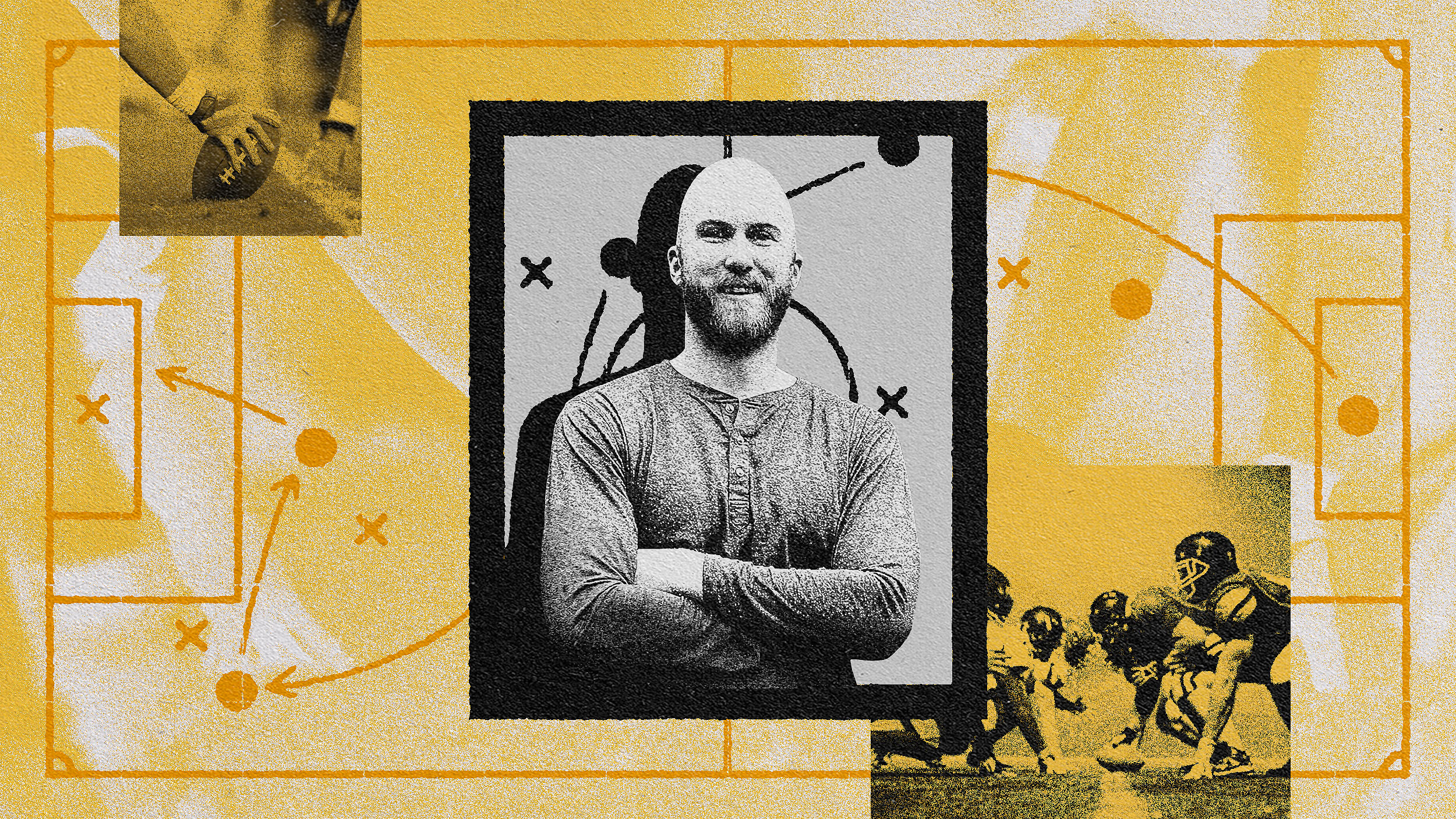The secret to finding fulfillment at work

- Most people leave their current employer to seek personal fulfillment elsewhere.
- In an interview, Aaron Hurst, author of The Purpose Economy, says the key to finding fulfillment at work is to build relationships.
- He recommends companies treat social capital as a unit of value while people make nurturing relationships a work priority.
How do we find fulfillment at work? Seeing as the average worker spends roughly 1,700 hours at their job annually, it’s a vital question to answer in the pursuit of a meaningful work-life balance. It also seems an elusive one as the number one reason people leave their current jobs is to seek personal fulfillment.
One popular answer is passion. If you’re into music, get a job in the music industry. If you like stories, become a writer. Seems logical, but all the personality tests in the world have yet to produce a fulfilled and energized workforce.
In search of a more enduring answer, I spoke* with Aaron Hurst, founder of Imperative and the Taproot Foundation and the author of The Purpose Economy. His research shows that there’s a critical, yet often ignored, element to finding fulfillment at work. That element being relationships.
KEVIN: You’ve been speaking about the science of relationships at work and how that’s connected to fulfillment and retention. What led you to explore that big question, and how’d you go about answering it?
HURST: For the last 20 years, I’ve been focused on purpose in the workplace and looking at what brings meaning to our work. As we did more research with universities and companies, we came to realize that relationships are the leading driver of meaning and fulfillment at work. If you lack relationships, it’s almost impossible to be fulfilled at work or life in general.
KEVIN: What is it about relationships that trump things like passion or impact?
HURST: You’d think people in “purpose industries” (like education or healthcare) would always be fulfilled, and people in “functional industries” (like accounting and engineering) wouldn’t be. But we found that industry wasn’t a major predictor of fulfillment.
Instead, you look at the way we’re wired as human beings. The number one predictor of our survival thousands of years ago was whether we were in a tribe. So, we were wired to have strong connections with other people because that determined whether we would get lunch or be lunch. Therefore, you need a sense of belonging.
KEVIN: Let’s clarify some terms. What do we mean by belonging?
HURST: Belonging is a fundamental belief that you are part of a group where you’re seen and valued. There’s a lot of talk around psychological safety, but that’s more a requirement for people to feel like they can show up as their full selves.
KEVIN: How does that tie into fulfillment? Is it that we’re satisfied going to work every day, are we developing our potential, or is it more a contractual fulfillment like a catalog order?
HURST: Yeah, like something you can order from an Amazon fulfillment center.
Fulfillment is a feeling you have when you find your work meaningful. Meaningful work is tied to three things. Do you feel like:
- You’re making an impact that matters?
- You have meaningful relationships?
- You’re growing?
If those three are occurring and you have the space to recognize them, that creates a sense of fulfillment which is driven by dopamine and oxytocin neurochemicals. It’s a scientifically-driven concept of true, sustained happiness.

KEVIN: So impact plays into it, but without relationships it doesn’t catalyze?
HURST: That’s right. You see many individuals and companies focused on defining their purpose. And what we’re finding is that it’s a secondary or tertiary variable. Meaningful relationships are the foundation.
KEVIN: You’ve talked previously with Big Think about communication at organizations. What role does communication play regarding belonging and fulfillment?
HURST: There are different levels of communication. When it comes to relationships, what’s critical is that you develop positive, consistent, and vulnerable relationships between people. That’s much more at the one-on-one level.
When you bring it up a level, it has to do with the organization communicating the importance of relationships, that relationships are hard to develop, and they require intentionality.
Relationships aren’t just nice to have; they’re the key strategy to achieve just about every personal and business goal.
KEVIN: Positive and consistent. Those make sense. But vulnerable?
HURST: People think being vulnerable often means like crying or just being raw. That’s not what it means.
It goes back to psychological safety and whether you’re having a conversation that brings your full self versus one that’s a status check or transactional. It’s fine to check in about the weather and last night’s sport scores, but that’s not a vulnerable interaction either. It’s got to be something where you’re expressing your current emotional state and being transparent.
KEVIN: How do we practice meaningful conversations then? Because let’s face it, the weather and sports are easier.
HURST: There are four things necessary to address systemically the need for meaningful relationships.
Companies need to make sure their people have clarity on who they should be building relationships with. They need to give them permission in a safe place to initiate that relationship. They need to fundamentally build the skills. And they need to put scaffolding in place for those conversations.
That’s something that needs to be part of the infrastructure at every company, especially in a remote and distributed workplace.
“You see many individuals and companies focused on defining their purpose. And what we’re finding is that it’s a secondary or tertiary variable. Meaningful relationships are the foundation.”
KEVIN: How do organizations build that scaffolding? Both in the general sense, but also given the nature of today’s remote workplaces.
HURST: I think it’s an exciting moment where we’re able to redesign how we work, and there’s permission to redesign it. It’s an opportunity to ask, “What is your existing stack of infrastructure, where are there gaps, and how can we design whole new parts of that?”
Using technology to connect individuals in dyads and have scientifically designed conversations is helping people address their well-being. It’s helping people’s growth. It’s helping people fundamentally address the problems they’re encountering on a day-to-day basis.
It’s creating scaffolding to both build relationships and having those relationships help them adjust to the new world of work.
KEVIN: Why dyads versus conversations at the team or office level?
HURST: To build positive, consistent, vulnerable conversations, you need psychological safety and space for people to feel they can share what’s happening. A dyad has the highest level of psychological safety and the ability to focus on each other. When you start getting into larger groups, you produce group dynamics that get in the way of that safety.
KEVIN: Can you give me an example?
HURST: Think about, instead of two people, there’s three. From a dynamic standpoint, I’m sitting there, Kevin, and we’ve got another person talking, and I’m suddenly wondering if Kevin likes that person more than me.
KEVIN: Right.
HURST: I’m wondering, “Are my answers as good as the other persons?” And then I’m moving into a performance instead of being authentic. I’m trying to win your favor relative to the other person.
KEVIN: And so we move from vulnerable to performative?
HURST: Exactly. It’s not that you do it every single time, but you tend to.
You also don’t generally go as deep and get as vulnerable because you don’t have as much time. So we’ve found you need about 45 minutes to an hour to have a meaningful conversation between two people. If you have a third, you need to start expanding because you don’t get enough time to create that bond.
KEVIN: How often should these conversations take place?
HURST: We’ve found that doing one of these conversations every two weeks is the ideal cadence, and every quarter or so, you’re switching partners. Over a year, you might build three or four best friends at work.

KEVIN: Lately, we’ve seen employees at companies like Amazon and Starbucks are not fulfilled at work. These companies are having difficulty with relationships, and there’s mistrust from the top down. What are they getting wrong about relationships?
HURST: One thing to understand is the context. A lot of these companies had, basically, 50% of their team join in the last year. You have to appreciate how hard it is to have that level of transition and change. That’s why you have to be intentional about building relationships because it’s so hard in that context to establish a culture.
The most important thing they can do is focus on managers, especially frontline managers. Many frontline managers operate out of fear, and they tend to be horrible managers because that drives their interactions with their teams.
So, you must figure out how to build a support system for managers. Imagine a company where all the managers are regularly supporting each other and are talking through their challenges. You start to get them out of that place of fear and into an abundance mindset.
KEVIN: What’s the basis of that fear, and how do these conversations alleviate that?
HURST: A lot of managers feel like they’re failing because it’s a freaking hard job. If you can’t normalize that and realize everyone’s struggling, it’s easy to talk yourself into this frame of “I’m failing.”
It’s like in school. You need to see that it’s being graded on a curve. What you’re doing probably is an A even if it feels like a D. It’s hard for everybody. Simply changing that fundamentally changes the fear dynamic.
KEVIN: And that’s where vulnerability versus performance comes in. Because if I’m discussing this with other managers and I’m putting on the act that things are going great —
HURST: That makes it worse. A person’s like, “Oh, I didn’t realize this was easy for others. I really am bad at my job.”
But to hear someone say, “I’m struggling. I had this person quit, and I feel like I’ve failed.” Then to have the other person say, “I had someone quit last week, as well. It’s really hard. And here’s what I’m learning from it. What are you learning?” That’s a healthy conversation.

KEVIN: But I don’t want to be the first person to admit that I’m struggling. There’s the risk that I’ll put myself out there and be alone. How do we get beyond that worry to present our vulnerability?
HURST: We’ve found that it’s important to start conversations not with what’s going wrong but with who you want to be. Who are you at your best? Then what are the impediments to being your best? Not a defense mechanism, which is how I prevent failure. It’s about how you get to your best.
We’re all on that journey to help each other. That’s the frame you need.
KEVIN: What changes would you ask the higher-ups to make to facilitate these kinds of conversations?
HURST: To start, communicate to the organization that relationships are the most important part of your culture and people’s careers. The second thing is to say relationships don’t happen serendipitously like we want to believe — they require continuous investment.
You also need to think about relationships as a unit of value inside your organization. How are you measuring that? How are you monitoring that? How are you investing in that to see if it’s improving?
And it’s not just about doing surveys; it’s getting to a higher level of sophistication of the nature of relationships and having someone whose job it is to ensure that social capital — which is a byproduct of those relationships — is increasing. You want to see your social capital increase quarter over quarter. That’ll become a predictor of profitability.
Today, most companies don’t measure social capital. One of the key indicators of their future performance, and they’re blind to it.
KEVIN: Are there any companies that are nailing this right now?
HURST: When I talk to CEOs, most of them still have this fundamental belief that I think stems from school: The cool kids make relationships, and the losers don’t.
There needs to be this wake-up call of realizing that for the majority of people, relationships are not an easy thing. They need support. Even before the pandemic, 61% of people were lonely at work according to a study that Cigna did. So, going back to the old model doesn’t fix the problem because the old model didn’t work to begin with.
The companies I see doing the best job are the large consulting firms because they have the most social capital. It’s critical to their business. If you look at big companies like PWC or IBM or Accenture, they’re getting it before others are.
The intersection of tech and consumer is another place. We’re seeing a lot more activity around this because there’s a recognition of the importance of how relationships internally end up playing a role in relationships externally.
“There needs to be this wake-up call of realizing that for the majority of people, relationships are not an easy thing. They need support.”
KEVIN: So, you’re suggesting that monitoring social capital and building it as a metric of company health will carry more traditional metrics like retention, employee engagement, and the bottom line?
HURST: Yes, it will. If you address social capital, that’s the biggest predictor for engagement. It’s your predictor for innovation. It’s your predictor for whether you can build an inclusive culture where people of different backgrounds thrive. It’s your predictor of customer success. It’s your predictor of sales.
If you look at all the things that you care about as a CEO, it’s one of the leading predictors of those outputs.
KEVIN: How would you demonstrate that cause and effect?
HURST: Take innovation. Innovation has to do with different perspectives colliding. If people don’t have psychological safety, they don’t innovate, or they innovate but it never goes anywhere.
That’s because they have no means of transmitting that innovation. The ability to move quickly and change is built on trust. And if you don’t have social capital, you don’t have the trust that’s a necessary prerequisite.
So for every single thing, if you look at it independently, you see that relationships are the key ingredient being ignored.
KEVIN: This goes back to your school analogy. If you don’t have those relationships, going to school is a drag. It doesn’t matter how talented you may be in biology. Your experience is still dreadful.
HURST: That’s exactly right. When my kids come home from school, they don’t talk about what they learn. They talk about their relationships with their friends. When my spouse comes home from work, we don’t talk about the content of her job. We talk about issues, positive and negative, that come up around people. Right?
KEVIN: I love that. I have a fifth-grader, and when he comes home, I try to get him to talk about what he learned in school today. It’s impossible. He’s like, “There was some math, I guess.”
HURST: Which is the way it should be because we’re wired that way. It’s just that we haven’t acknowledged it as a society.
We tend to focus on tasks, and a lot of that has to do with the history of work, the power dynamic between management and “workers,” and the dehumanization of workers. And part of that dehumanization is trying to think of them as much as possible as robots.

KEVIN: That’s a great segue into individual people. How can anyone use this information to improve their work-life?
HURST: I would even take a step back from there. My daughter, who’s a junior in high school, has many conversations about her career. And I tell her, “Look for jobs where you get to work with people you want to work with. Don’t focus as much on the industry. Don’t focus as much on the function. Focus foremost on: Is this a group of people I want to spend 8 hours a day with? People who will energize me? People who will challenge me?” That should be your number one determinant (assuming the salary is fair).
Then once you enter an organization, it’s taking a relationship-first approach. From day one, identify proactively who you want to build relationships with. If you initiate, you’re going to do well. If you’re sitting around waiting for them, you may be waiting a long time.
The next step is to take stock. Every week or month, sit down and ask, “Do I have meaningful relationships at work? Where do I have gaps? Where would I like to build a new relationship?” Treat this as a continuous experiment where you’re measuring, building, and maintaining the relationships you want.
KEVIN: What’s that relationship inventory look like?
HURST: Start with a very high-level question. On a scale of 1 to 10, to what degree do you have meaningful relationships at work?
A 9 or 10 means you’re doing it right, but don’t take it for granted. Continue to invest.
A 7 or 8 probably means you need to be proactive to make things better.
A 6 or below is an extreme danger zone. You need to evaluate whether you’re fundamentally approaching your work in the wrong way or if you’re in a culture where you can’t build relationships. In which case, you probably need to leave.
How would I break it down into certain categories? I would look at:
- Do you have relationships with people who help you solve problems? If not, where could you get those?
- Do you have relationships that bring different perspectives? If not, who could help?
- Do you have relationships that provide personal support? If not, who could be that?
- Do you have people who can collaborate with you, or are you doing your work in isolation? How can you change your approach to be more collaborative?
- Finally, do you have relationships that bring purpose to your work and make it meaningful? Do they help you feel excited about the work you’re doing?
That’s the inventory, and you need all five.
“Organize your life and every dimension around relationships.”
KEVIN: How does lifelong learning play into fulfillment at work?
HURST: The most important life skill is how to build relationships, and no one is perfect at it. It’s a continuous journey. Look at your relationship-building skills today. Assess where you are and continuously work to be better.
The second is the ability to shut up and listen. Most people don’t have that skill. As a lifelong learner, building self-awareness about needing to talk less and listen more is probably the most important lesson.
KEVIN: I’ve noticed that a lot — both in general and about myself. What is it about our desire to talk, talk, talk, and not listen?
HURST: It goes back to school. Whoever had the best answer to the question was perceived as adding the most value. I think that’s a big part of it. The second part is that we’re all insecure in different ways. Giving advice is actually a way of addressing our insecurity and showing we’re of value. We can be a hero to somebody.
KEVIN: When you catch yourself in that talk mode, what’s your practice for getting back to listening?
HURST: Move from a defensive mind to a curious mind. We don’t need to add value in the way we think we do. We need to just help someone feel seen, help them see things they’re not seeing.
It’s like my grandfather. He didn’t ask, “What did you learn at school today?” He said, “What question did you ask today?” That’s how we should be responding.
KEVIN: And we’re back to dyads and vulnerability over the performance.
HURST: That’s right.
KEVIN: What’s that big idea that you want our readers to take away and apply to their lives in some fashion?
HURST: Organize your life and every dimension around relationships.
KEVIN: Succinct. <laughs> Anything you’d like to add?
HURST: I started my career in Silicon Valley during the rise of the information economy. The companies that embraced technology fully — not just by building a website but redesigning the entire company around technology — are the ones still here today.
I believe those organizations coming out of the pandemic who reorganize their business around relationships are going to be the ones that will be successful 10 years from now. Those that see relationships as periphery will find themselves without talent, without innovation, and without the ability to change. This will be the biggest predictor of success: whether companies embrace relationships the way they embrace technology.
KEVIN: Where can people find you to keep learning about relationships and fulfillment?
HURST: I’m a LinkedIn influencer and regularly post. Please connect with me there. I love to engage in conversation.
Learn more on Big Think+
With a diverse library of lessons from the world’s biggest thinkers, Big Think+ helps businesses get smarter, faster. To access Aaron Hurst’s full class for your organization, request a demo.
* This conversation has been edited for length and clarity.





